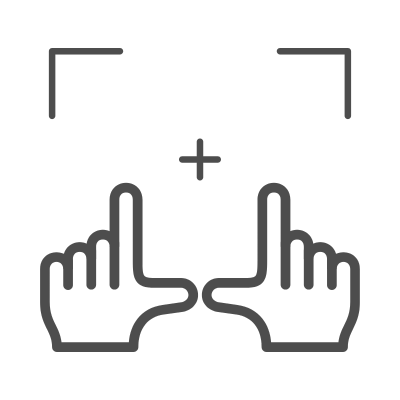Case study
Reinventing a consulting firm through hidden capabilities
// innovation
// transformation
// futures
// maturing industry
Summary
A consulting firm wanted to scale its core service and become a major brand.
After a decade of operating as a lifestyle business, this consulting firm's leadership had ambitious plans— dominate their industry as a major brand, but their core service wasn't designed to scale.
Through facilitation, research, and industry analysis, I uncovered critical barriers to their growth ambitions. Rather than trying to force-fit their existing model, we explored a fundamental question— how do you scale an unscalable business?
Through collaborative ideation sessions, I facilitated alignment around the challenges while getting stakeholders invested in reimagining their business model. Multiple rounds of prototype testing helped build confidence in a radically new direction. The answer emerged through this collective process— a completely new business concept that leveraged capabilities the firm didn't even realize they possessed.
My role
// facilitation
// interviews
// analysis
// problem formulation
// collaborative ideation
// prototyping
// business concept
// business model
Challenge
Aren’t professional services businesses notoriously unscalable? Yes, yes they are. But I do like a challenge.
I’ve been in the business world long enough to know that one of the laws of business is that professional services businesses are not scalable.
/ 1 /
Everything is relative. Not every business will be one of the biggest companies in the world with relatively few resources. However, there is some middle ground between “no hope of scaling” and “most scalable businesses in the world.”
/ 2 /
We aren’t far enough along in this journey to say it is not possible. I cannot say there is no solution when I haven’t even defined the problem.
Approach
While I didn’t yet know what the solution to this problem would be, I did know how to approach it.
/ 1 /
Research
Conducted interviews and analyzed a variety of qualitative and quantitative data.
/ 2 /
Define
Defined the nature and scope of the problem to be solved to create a container for ideation.
/ 3 /
Ideate
Engaged in collaborative activities to ideate possible solutions to the problem.
/ 4 /
Prototype
Converged on a select few solutions. Designed and tested prototypes with clients.
Research
Research revealed that consulting firms in this niche were seen as a “necessary evil,” and this firm was not in a competitive position.
Market context
// It was not uncommon for companies to view firms in the company’s niche as a “necessary evil,” not as valued partners. Although the companies engage firms in this niche to do important work on their behalf, many are reluctant customers.
// The industry was highly fragmented, with a few established players who dominated the market while thousands of small firms competed for a much smaller share of the market.
Employee experience
// Team members lacked clarity and felt like they were pulled in many directions. They had ideas for how to improve the service, but believed there was no room for differing perspectives. A lack of psychological safety became a barrier to them speaking up or raising legitimate issues. Many found both the work and culture unsustainable, and the average employee tenure was less than one year.
// The service delivery team felt micromanaged and received constant, but conflicting feedback on their work.
Client experience
Before
awareness // consideration
// The firm’s competitive position was unsustainable— no longer differentiated in this mature and competitive market, yet the service was priced 2-3x higher than competitors.
// There was no reliable mechanism for generating business.
Begin
new client // onboarding
// Clients valued speed and felt that the initial steps were unnecessary and delayed results.
// The service delivery team felt compelled to “make up” for new client dissatisfaction, the tangible and intangible costs of which were often invisible.
During
service delivery // ongoing
// There were no clear, documented expectations regarding service delivery.
// The service delivery team spent ~20%+ of their time on activities that yielded no value to the client.
// The service delivery team often skipped steps and quality assurance due to time pressures, which led to complaints by clients about the errors and results.
After
former client // offboarding
// The vast majority of projects ended with successful outcomes, yet paying clients were dissatisfied, while other stakeholders were overwhelmingly satisfied.
// Even happy clients rarely re-engaged because they have that particular need infrequently, but the happiest clients will refer clients to the firm.
Challenge
Scaling an unscalable business was a secondary concern. There were more important problems to worry about first.
The full scope of the problems I identified during the research phase indicated that the core service, as it was designed and delivered at this time, was not sustainable. It became apparent that the foundation of the business was not stable enough to attempt growth or scaling.
/ 1 /
Direction
Established the company’s first identity framework— vision, mission, and values. As a social enterprise, this crucial component of strategy and decision-making was missing.
/ 2 /
Standardization
Standardized the core service while allowing for adaptations based on client personas that we were able to develop using the research and team’s expertise. We defined quality standards.
/ 3 /
Sales
Created systems, materials, and a new pricing strategy to enable the sales function. We developed a plan to revisit how to differentiate the firm in the market given its position relative to competitors.
/ 4 /
Ai adoption
Redesigned part of the service delivery workflow to incorporate a large language model (LLM), reducing and evening out the team’s workload while meeting quality standards.
Problem
With the legacy business in better shape, it was time to revisit the problem of scaling.
How might we leverage existing capabilities to develop a scalable business concept that advances the company’s mission?
Ideation
The same team that felt stuck at the beginning of this process generated over 100 ideas.
The team generated
102 ideas
3 ideas
were chosen for prototyping
Prototyping
We designed prototypes and tested them with real clients, which showed us what they really wanted from the firm.
Insights
prototype // failed
Likely not enough interest to build a sizeable business. Did not stand out in the market from other firms, which perpetuated the lack of differentiation in the market.
Coaching
prototype // failed
Likely not enough interest to build a sizeable business. Lacked appeal with the client base. While they didn’t always like the idea of hiring a firm, they also didn’t want to do that type of work themselves.
Pivot
prototype // promising
Not every business leans into its strengths, but if you ask what the company is good at, the answer might surprise you and send you in a direction that you never would have imagined at the start of the project.
Results
And it turns out that you can scale an unscalable business (kind of).
Revenue increased
25%
from “small” improvements
1
concept for a scalable business
that showed early promise















